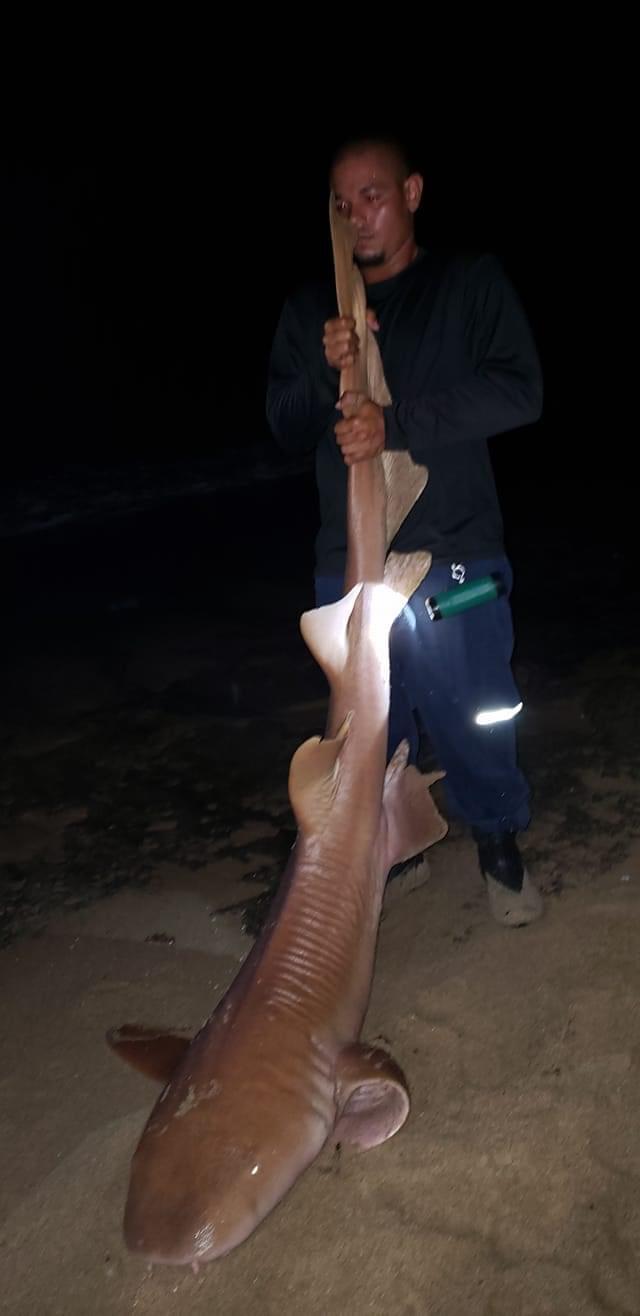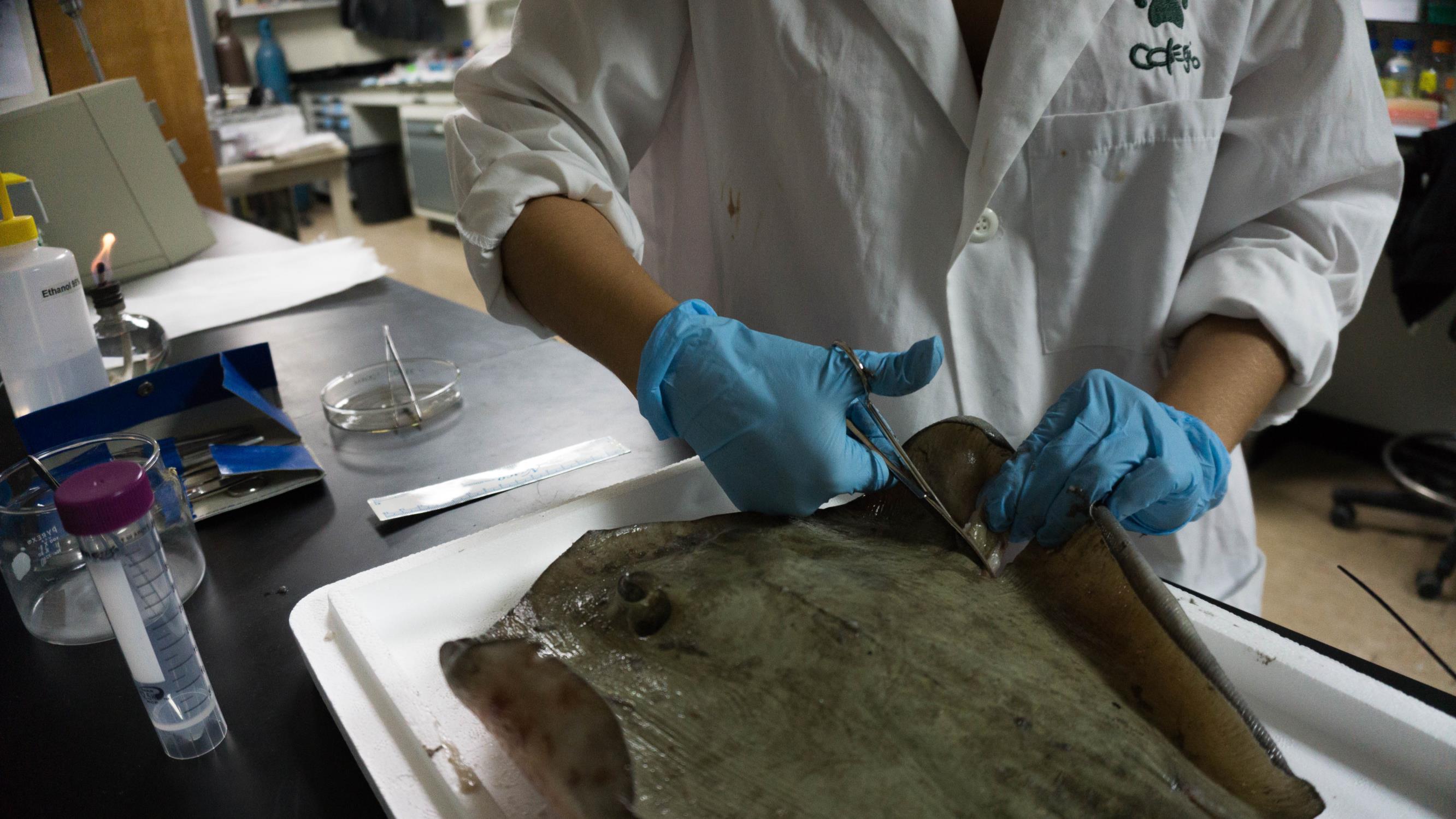USING DNA BARCODING TO IDENTIFY SEAFOOD FRAUD IN PUERTO RICO



Department of Marine Sciences

 Msc. Natalie Marie Báez Rodríguez
University Of Puerto Rico- Mayagüez Campus
Msc. Natalie Marie Báez Rodríguez
University Of Puerto Rico- Mayagüez Campus




Department of Marine Sciences

 Msc. Natalie Marie Báez Rodríguez
University Of Puerto Rico- Mayagüez Campus
Msc. Natalie Marie Báez Rodríguez
University Of Puerto Rico- Mayagüez Campus
Public Health
• Food Poisoning
• Allergic Reactions
• Contaminant Exposure
Environmental
• Illegal Fishing and Overexploitation
• Risk of Extinction of Threatened Species
• Local extinctions
• Trophic Cascade
• Reduction of a Predator Population
• Increases in populations of intermediate components
• Reduction in the populations of the mesopredators’ prey
• Molecular identification methods
• DNA barcoding
• Next-generation sequencing
• Fish traceability is key to combating fish fraud
• Enforcing food safety regulations
• Ensuring high standards of sustainable fisheries management
• Ensuring the quality of fish products
• Minimizing health risks for consumers
• Some are apex predators
• Clean- up crew: Removal of weak and sick individuals
• Provide mass-balance

• Maintain structure in healthy ocean ecosystems

• Removal of invasive species
• Habitat disturbance
• Including nutrient cycling

Size

• Maximum to about 45 cm; commonly to 25 cm.
Fisheries importance
• Marketed fresh
• Highly prized in the Caribbean
• Considered excellent eating, although some species have been reported to have toxic skin (ostracitoxin) on occasion
Species
• Scrawled Cowfish, Acanthostracion quadricornis

• Buffalo Trunkfish, Lactophrys trigonus
• Smooth Trunkfish, Lactophrys triqueter
• Spotted trunkfish, Lactophrys bicaudalis



• Use DNA barcoding to detect the prevalence of seafood fraud in turnovers and shark meat
• Determine if chapin is being substituted with other fish species
• Determine if nurse sharks are being sold for consumption

Chapín Turnover

Restaurants
Local Business
Chinchorro
Shark Meat

Restaurants
Fish markets

• Shark meat
• Chapin Turnovers
DNA Extraction
• Chapín Turnovers
• 63 turnovers were collected
• Three subsamples of meat from each sample (n=189)
• Shark Meat
• 100 samples were collected
• 59 fillets
• 33 turnovers
• 8 pinchos
PCR
• Mini Primers
• Universal Fish Primers
• Specific Primers for G. cirratum
• 15 species were identified
• Four species of boxfish were identified
• Elasmobranchs
• Imported freshwater species
• Other marine fish
Shark meat
• Nine shark species
• Near Threatened, Vulnerable, Endangered, and Critically Endangered state
• Imported freshwater species
• Other marine fish

Only eight of all 62 samples contained chapín
• Only three were 100% boxfish
Chapín Turnovers
The only species of ray identified
• Hypanus americanus (NT), n=7 samples
Shark species
• Isurus oxyrinchus, Shortfin Mako (EN)
• CITES listing : Appx II.
• Galeocerdo cuvier, Tiger Shark (NT)
The most common substitutes were
• Tilapia (n=40 subsamples)
• Striped catfish (n=27 subsamples)- EN
• Bocourt’s catfish (n=19 subsamples)
• Queen triggerfish (n=23 subsamples) - NT
CITES Listing: NT, Not Listed; Appx. II, Appendix II. IUCN Red List status: LD, Least Concern; NT, Near Threatened; EN, Endangered; VU, Vulnerable; CR, Critically Endangered.
Shark Meat
Nurse Shark
• was not detected in the samples during the collection period
Nine species identified in this study
• Caribbean reef shark (EN)
• Blacktip shark (VU)
• Atlantic sharpnose shark (LC)
• Great hammerhead (CR)- Appx. II
• Tiger shark (NT)
• Shortfin mako (EN)
• Blacknose shark (EN)
• Silky shark (VU)- Appx. II
• Mustelus sp. (NT)
Imported freshwater species
• Striped Catfish
• Pinchos (n=5)
• Tilapia
• Turnovers (n=1)
Other marine fish
• Common Snook
• Turnovers (n=9)
CITES Listing: NT, Not Listed;Appx. II, Appendix II. IUCN Red List status: LD, Least Concern; NT, Near Threatened; EN, Endangered; VU, Vulnerable; CR, Critically Endangered.
• A recent assessment of the seafood industry contacted 139 small-scale commercial fishers to understand the COVID-19 pandemic impacts in Puerto Rico
• 79% reduction on numbers of fishing trips
• 71% decrease in prices or lack of markets (dealers, buyers, clients)
• 48% reduction in their operational activities due to government restrictions
This study provided evidence of seafood fraud in the form of species substitution and mislabeling among fishmongers and restaurants in Puerto Rico
This is the first time that the possible use of rays as a substitute in chapín turnovers was studied and ultimately verified
Most species that were detected are in a Near Threatened, Vulnerable, Endangered, and Critically Endangered state Nurse sharks were not detected in any of the shark samples collected (n=100 samples)
• But in previous study were detected their fish in Puerto Rico
• Promote local education to fisher community, restaurants and general public
• Shark ID
• Elasmobranchs importance in our ecosystem
• Potential health risk of species substitution
• Improve knowledge of regulations
• Monitor the sell of sharks to observe if protected species (nurse sharks) are being sold.
• Consider to adopt Federal regulations for sharks to local water or find alternatives with fishers specially with those species under IUCN red list category such as:
• Near Threatened
• Vulnerable
• Endangered
• Critically Endangered

SCIENTIFIC
Acanthostracion
Scomberomorus cavalla Carite, Sierra carite
mackerel
Centropomus undecimalis Róbalo común, Róbalo blanco, Róbalo
Coryphaena hippurus Dorado, Pez Delfín, Mahi-Mahi, Lampuga
Acanthocybium solandri Peto, Barracuda de mar
Isurus oxyrinchus Mako
Galeocerdo cuvier Tiburón tigre
FL 16" (40.6cm); Recreational quota: 5 per person/day or 10 per boat/day
FL 16" (40.6cm)